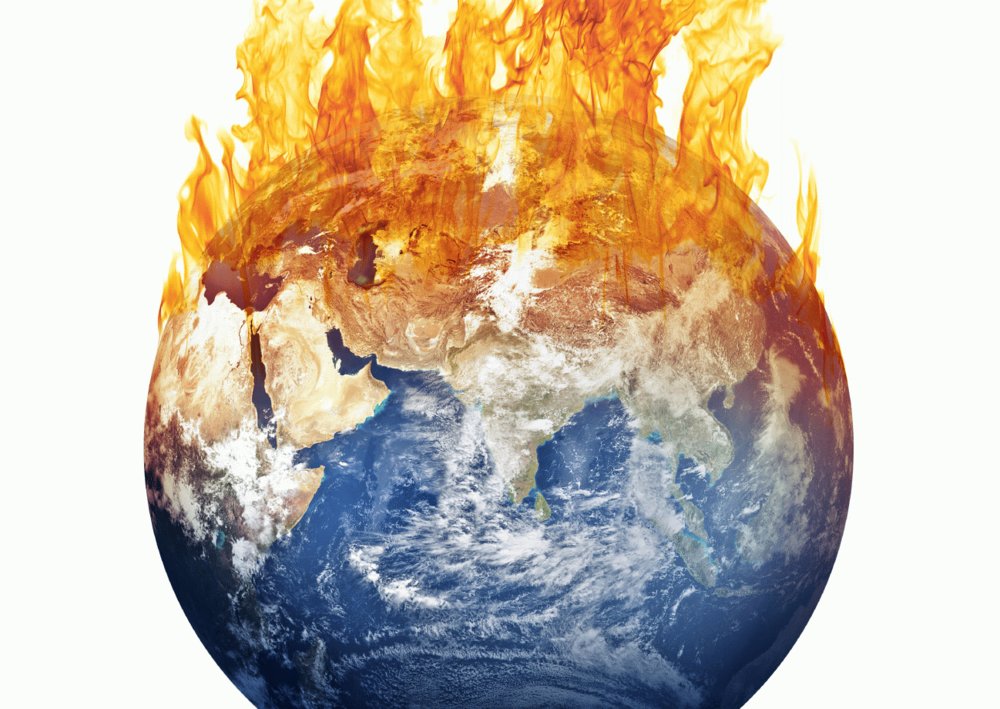Consequences of global warming over Iran and the Middle Eastern countries

Two-hundred years following the Industrial Revolution, the density of greenhouse gases including CO2 has increased to an unprecedented level compared to the past 800,000 years.
Increased greenhouse gases, resulting from the use of fossil fuels in industries, vehicles, and household consumptions, as well as land use change, has raised the temperature on Earth at the rate of approximately 0.2 °C per decade. According to the fifth report of the Intergovernmental Panel on Climate Change (IPCC) which was the scientific basis of the decisions made at Paris Agreement during the 21st Conference of Parties (COP21), there is no doubt about temperature increase on the Earth and most recorded temperature since 1950 are unprecedented compared with past decades or even millions of years. Moreover, in the Northern hemisphere, the 1981-2010 period was the warmest 30-year period in the past 1400 years. Mean temperature in Iran has increased by 1 °C in the past decade (2006-2015) compared with the 1970s. In the past 50 years, precipitation has decreased in Iran at the rate of approximately 1 mm/year, snowfall has significantly declined, and temperature has increased at the rate of 0.03 °C/year. Such a condition increases potential water requirement at the rate of over 5 mm/year. In the past 5 years, the volume of total renewable water resources has been decreased by 15%. Aquifers in Iran face approximately 100 billion m3 of shortage in ground water reservoirs, 80% of which has occurred in the past 15 years. In recent years, despite the increase in the number and depth of wells, their yield has not increased, indicating improper feeding for the aquifers and severely declining groundwater levels.
Based on climate prediction models, the average temperature in Middle Eastern countries will increase by 1.8-5.5 °C by the end of the 21st century compared to the 1970s in the most optimistic and pessimistic scenarios, respectively. In case of applying a balanced scenario, temperature increase is estimated to be 2.1-2.9 °C. Contrary to the Earth’s general response, global warming will decrease precipitation in the Middle East, with the most severe decrease in Iran, Iraq, Turkey, Syria, Jordan, and Lebanon. Nevertheless, extreme precipitation events such as torrential rains, heavy snows, hailstorms, cloudbursts, and thunderstorms will be increased. In addition, fall precipitation will be delayed until the end of the cold season. A significant number of models have predicted an increase in precipitation in the Southern regions of Iran and the states around of Persian Gulf-Sea of Oman in future decades. Despite the increase in average annual precipitation in these regions, the number of days with precipitations will not increase, indicating heavy and torrential rains in the future decades. Because of the increase in sea surface temperature, tropical storms will increase in the coastal regions of countries located in the north of the Indian Ocean and the Arabian Sea, e.g. Iran, Oman, Yemen, and Pakistan. Such a conditions necessitates the mentioned countries to retrofit their coastal infrastructure in order to resist and decrease the damages caused by rogue sea waves resulting from tropic storms and consider the effects of climate change in all their long-term development plans in coastal areas. Although precipitation increase is probable in Southeastern Middle East, but potential water requirement in the mentioned countries will be increased by 15-25% due to temperature increase. In other words, to combat the effect of temperature increase, a 25% increase in precipitation is required, which is impossible based on the predictions retrieved from climate models. The Falcon index which marks the water availability of 1700 m3/year as the water stress threshold, this index is estimated to fall below 1000 by 2025, necessitating emergency measures for preserving existing water resources.
Generally, the unique characteristic of the Middle Eastern climate in the 21st century is the increase in climatic hazards as well as the decrease in precipitation and increase in temperature, leading to a decrease in surface water flow, soil moisture, bioclimatic comfort indices, agricultural products, and food security; increase in climate-dependent diseases and pests, drought, and dust; disappearance of some lakes, lagoons, and natural ecosystems; destruction of forests in the Iranian Plateau; and mass emigration from countries with climatic crises. In order to overcome the consequences of climate change and enhance climatic resilience, Middle Eastern countries must enhance their regional climate and environmental cooperation. Most of the abovementioned consequences of global warming will continue for centuries.
From among the Middle Eastern countries, Iran and Saudi Arabia are among the biggest greenhouse gas emitters. By implementing the Paris Climate Agreement and other complementary agreements on the necessity of decreasing greenhouse gases and limiting the petroleum products, the economic growth of oil-producing states in the region will face serious challenges. In order to prevent a decrease in economic growth of oil countries, they must revise their long term economic development policies. Replacement of fossil energy sources with rich sources of renewable solar and wind energy need to be developed all around the Earth as clean energy sources.
Iman Babaeian is an assistant professor at Climatological Research Institute, CCL/WMO Advisor and a member of Global Framework for Climate Services (GFCS) Committee.
Leave a Comment